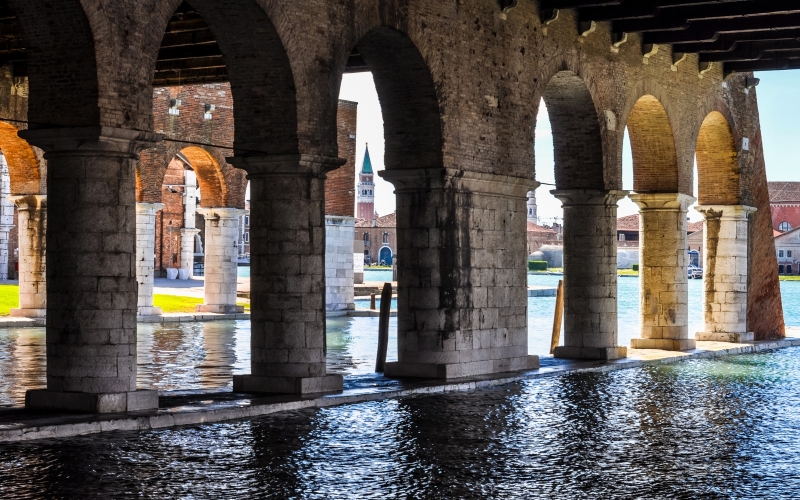
Venetian Arsenal
Monuments - Castello AreaBy 1400, the Arsenal was already the world’s most extensive industrial complex, with 3,000 employees (known as “Arsenalotti”) and a production capacity which, by the 1500s, had reached no less than six galleys a month.
This achievement was made possible by outstanding managerial talent and modern organisation of all aspects of production, from the procurement of timber to the preference for modular construction.
Over the course of the centuries, many major works were carried out, including the construction of laboratories, warehouses and, with the advent of gun powder, artillery rooms. The Arsenal represents a vast, striking and strategic area of the inner city covering about 32 hectares, of which 9 hectares are water, out of the total 670-hectare area of Venice, including the islands of Giudecca, Tronchetto, San Giorgio and the internal canals.
The structure complex has represented the fundamental heart of the Venetian economy and civil history, so much so that in 1509 the Senate officially defined it as the "heart of the region of Veneto".
HOW TO VISIT THE ARSENALE NORD
From Where: From Celestia Vaporetto stop: by line lines 4.1, 4.2, 5.1 and 5.2When: from Monday to Friday, from 08.00 to 15.00. The opening to the public concerns the public spaces and the ground floor of Tesa 105.
Venitian Arsenal: MAP
HOW TO VISIT ARSENALE SUD
From Where: The southern Arsenale can be reached with lines 1, 4.1 and 4.2 (ACTV stop "Arsenale"When: Dused by the Venice Biennale Foundation are open to the public during the opening months of the exhibitions (May-November) upon payment of the entrance ticket and in other periods according to the visits organized by the Foundation itself.
When and how to visit the Naval History Museum







